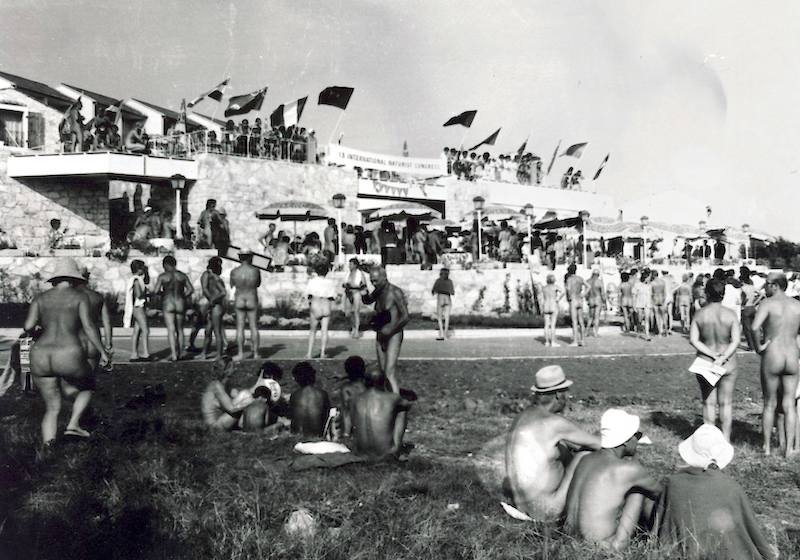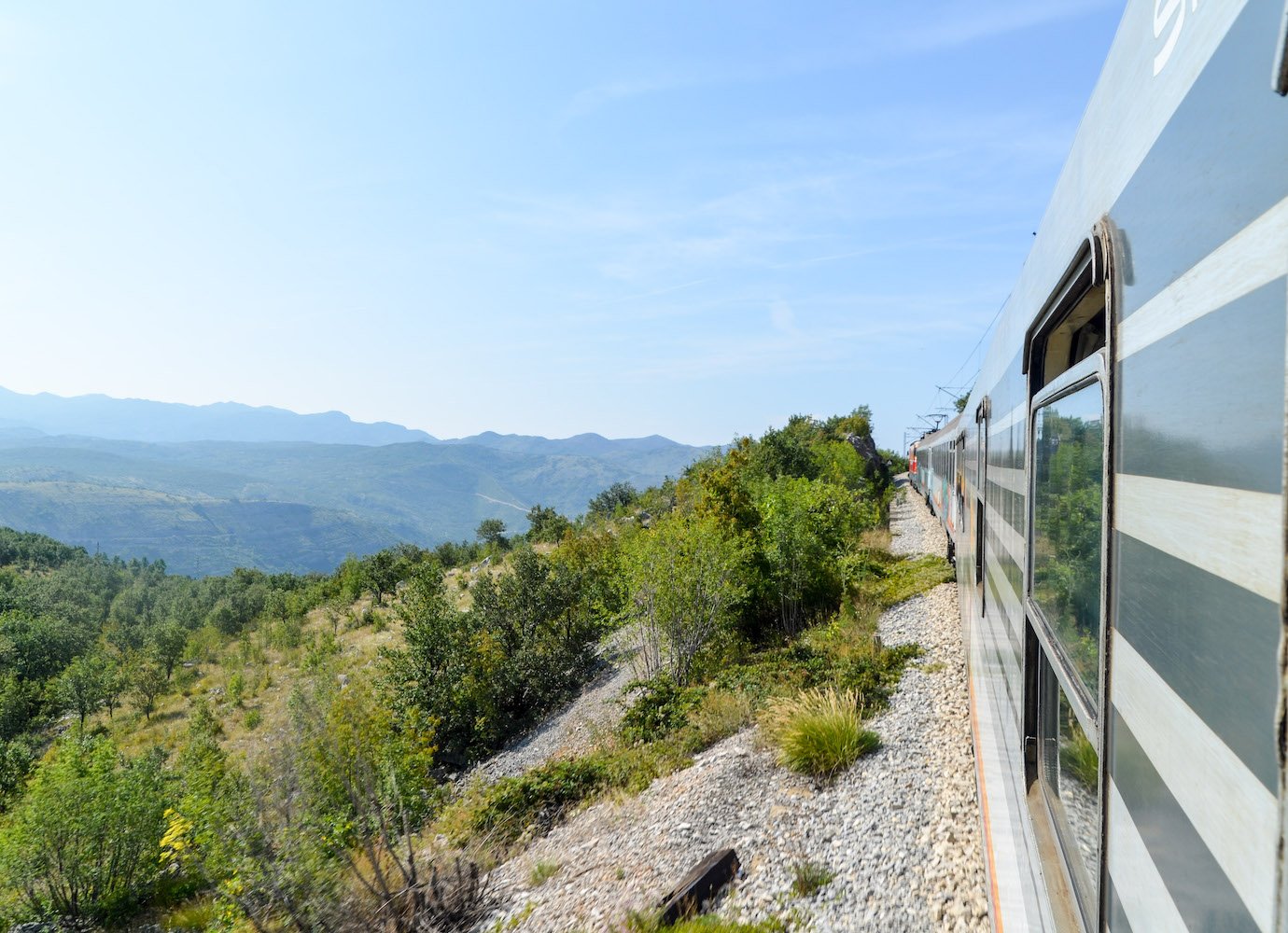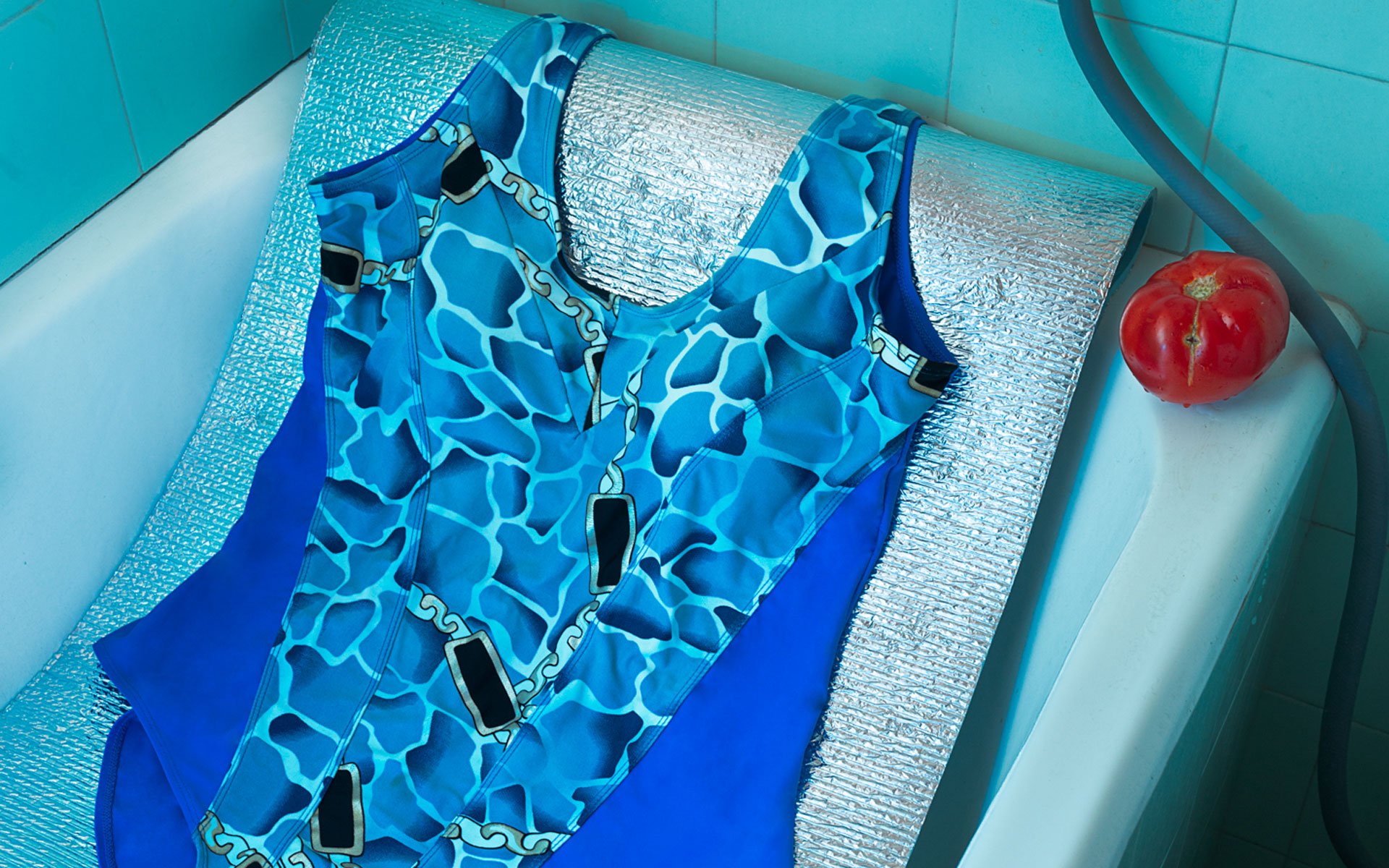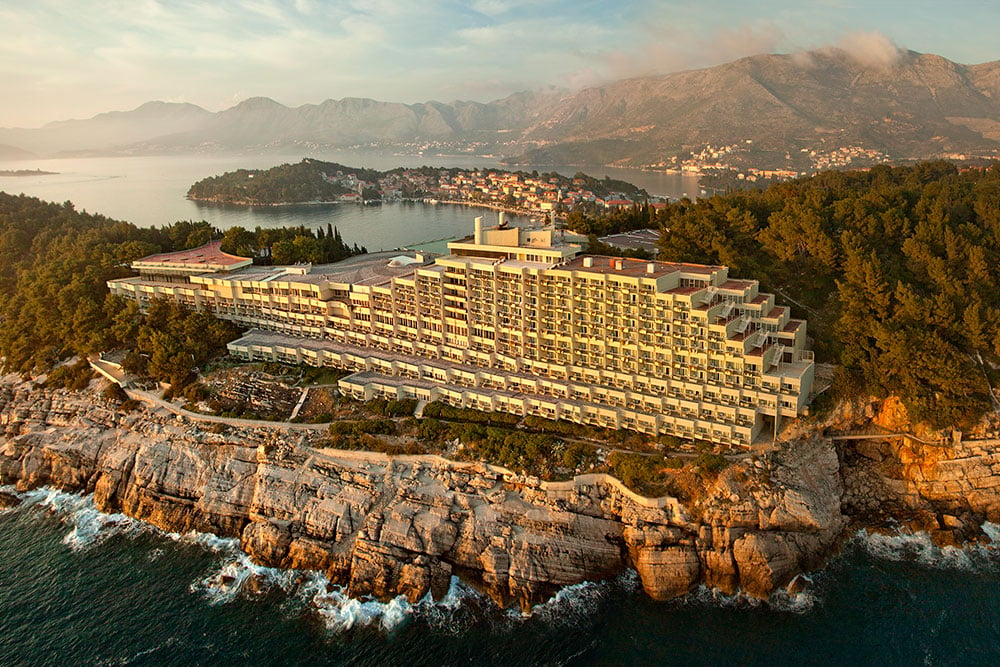The untold story of Yugoslavia’s naturist paradise

For Yugoslavia's socialist government, accepting millions of naturists who wanted a relaxed space to get back to nature was a useful show of Cold War soft power. The policy left its mark, with nudist resorts on the Adriatic Coast to this day — but the modern, capitalist world has also brought new challenges.
In August 1972, the International Naturist Federation held its 13th Congress in Koversada, a city-sized camping resort on Croatia’s Istrian coast. More than 250 journalists flocked to the region — then part of Yugoslavia — to mark the first time such a meeting had been held in a communist country.
An estimated 400 celebrants attended the opening ceremony, at which the Naturist Federation’s flag was hoisted to the strains of Yugoslav national anthem Hej Slaveni (Hey You Slavs!). For the next seven days, delegates discussed everything from relations with nudist groups in other communist countries, to the dangers to the movement posed by pornographic magazines. Sessions took place in the courtyard of a palatial villa originally built for German Count Lichtenberg. Western nudists accustomed to the back-to-nature simplicity of the movement were taken aback by the chandeliers, luxurious furnishings, and black-tie waiters provided by their socialist hosts.
Naturism was also an archetypal example of Cold-War soft power. Non-aligned Yugoslavia could demonstrate that it was a free and tolerant country
Clothes-free tourism was one of the many things that made Yugoslav communism rather different to the model then offered by the Soviet bloc. Throughout the 70s and 80s, Yugoslavia was one of the biggest nudist destinations in the world. Koversada, which could accommodate 10,000 guests at its peak, was just one part of a coastal resort archipelago that attracted an estimated one million naturists a year.
These visitors could provide a considerable income. The value of events such as the International Naturist Federation congress to the Yugoslav tourism industry as a marketing exercise was incalculable. “Reaching such a wide public would have normally cost us a fortune,” says the congress’s organiser Jerko Sladoljev, long-time Koversada marketing manager and still a sought-after expert on the Adriatic camping scene.
But naturism (commonly referred to by the initials “FKK”, in line its German name, Freikörperkultur) was also an archetypal example of Cold-War soft power. Non-aligned Yugoslavia could demonstrate to Western Europe that it was a free and tolerant country that displayed none of the puritanism associated with its Soviet-bloc neighbours. It was also a way of demonstrating to Yugoslavia’s own citizens that they lived under a system that was not unduly restrictive, as well as a country in which foreign contacts were welcome.
Tourists at Koversada in 1961. Image courtesy of Jerko Sladoljev
Foreign journalists talked of Yugoslavia as a nudists’ paradise. “No sooner do you get off the boat than you see natural beauty at every turn,” declared Die Zeit’s Armin Ganser in March 1972, before reeling off a list of naturist resorts stretching from the Croatian town of Umag in the northwest, to Montenegrin Ulcinj in the far southeast.
As well hard-core nudists staying in resorts like Koversada, where they could roam unclad for days on end, there were also significant numbers of fellow-travellers, who would stay in regular accommodation but visit nudist beaches during the daytime. According to a report drawn up by Jerko Sladoljev for the Yugoslav tourist industry in 1978, the country boasted 25 nudist beaches in established naturist resorts, 34 designated nudist beaches elewhere, and as many as 60 “wild” nudist beaches that, despite being unregulated, were happily tolerated by tourist-friendly authorities.
The origins of Yugoslav naturism go back to the interwar period, when the Adriatic coast attracted small groups of German and Austrian naturists in search of unspoiled nature and more secluded holiday spots. These early nudists were also seeking an escape from radical conservatism in their own countries. Despite nurturing a cult of physical fitness, the Nazis saw the naturist movement as a decadent bohemian deviation, forcing FKK culture to go underground — or abroad.
It was Munich-based naturist Rudolf Halbig who began visiting Koversada, a small island just south of the hilltop settlement of Vrsar, in the 1950s. At the time, Vrsar was a sleepy 800-strong town that eked a meagre living from local wine, olive oil and hazelnuts. The local agricultural cooperative decided to diversify into tourism by setting up a couple of modest guesthouses; Halbig established a travel agency named Miramare in order to feed them with guests. An agreement was signed in April 1961, with Halbig offering to send 400 German naturists per year on two-week packages. The island of Koversada was designated as the secluded spot where they could bathe. A small campsite was organised on the island in subsequent years, but business grew quickly, and a much larger site, together with bungalows, restaurants and sports facilities, was built on the mainland opposite the island itself. The success of Koversada was soon repeated in settlements up and down the Istrian coast.
An aerial view of Koversada in 1963. Image courtesy of Jerko Sladoljev
“The communist authorities didn’t really understand what naturism was,” says Jerko Sladoljev, who came to work at Koversada as a young tourist-management graduate in 1968. “Although they did see that the Catholic Church didn’t like it, and anything that made the Church uncomfortable was pretty good in their eyes.”
Sure enough, Koversada became a major destination for Italian tourists precisely because Catholic pressure had led to a ban on nudism in their own country. It was one of the more unexpected paradoxes of cold-war history that dissident Italian naturists came to communist Yugoslavia to feel the fresh breeze of freedom.
“The communist authorities didn’t really understand what naturism was. Although they did see that the Catholic Church didn’t like it, and anything that made the Church uncomfortable was pretty good in their eyes”
“There was even a small number of Italian priests who came to Koversada,” Sladoljev says. “One of them even told me ‘It’s not important what you wear, it’s how you carry yourself that counts.’ In my experience, 90 per cent of naturists are more moral than non-naturists.” There is certainly little evidence of sex orgies or swinging at Yugoslavia’s nudist resorts. According to a study conducted by Sladoljev in 1978, 85 per cent of FKK tourists were families with children. Nevertheless, naturist campsites still had certain rules that “textile” (or normally-clothed) sites did not. “Men could only come into a naturist camp if they were accompanied by a woman; although women were free to enter solo or in groups.” Quite how the Italian priests dealt with this restriction, Sladoljev does not say.
Tourists at Koversada today. Image courtesy of Koversada Resort
But ultimately, there was very little about naturism that aroused controversy in Yugoslavia, where catering for nudists was seen as a logical extension of the hospitality industry as a whole. “People were initially unenthusiastic about sending their children to work at a naturist resort” Sladoljev says, “until those who worked in the camp told everyone else that it was actually a perfectly respectable job. Very soon, it was accepted as normal, and local people wanted to be involved, seeing the camp as a good opportunity to sell their produce or their crafts. Ultimately, they never had any problem with naturism because of the money it brought in.”
Nevertheless, naturism was never quite considered respectable by the political elite. FKK veteran Richard Ehrmann, who was one of the main speakers at the Koversada congress of 1972, noted — more in amusement than indignation — that no major political functionary had turned up to greet what was a major international gathering. (The congress was opened by the mayor of Poreč, the nearest town; but indeed, nobody higher up bothered to come.)
How many card-carrying communists actually made it to the beaches of Koversada is a statistic that went unrecorded —although it is likely that there were quite a few. By the 1980s there were an estimated 50,000 members of naturist clubs in Yugoslavia itself, of whom at least 30,000 were from Slovenia. “The Slovenes were always the most progressive” Sladoljev notes, “They were geographically closest to the West.” The Slovenes accounted for one fifth of Koversada’s guests during the communist period, and still make up 15-18 per cent of the clientele today.
Ironically it wasn’t communist Yugoslavia that felt threatened by naturism, but the naturist community in the West that was suspicious of Yugoslavia. “I attended a congress in West Germany and was suspected of being a communist agent sent to infiltrate the world naturist movement,” says Sladoljev. “They were slightly afraid of us; we came from a different milieu.”
An aerial view of Koversada today. Image courtesy of Koversada Resort
Three decades after the demise of Yugoslav communism, naturism remains part of the Adriatic tourist brand. There is not, however, the same demand for specialist campsites. Nude sunbathing and skinny-dipping are far more widespread among modern tourists, and, providing you’re discreet, nudism can be practiced away from designated havens. Croatia’s nude beaches still exist, the letters “FKK” painted onto shore-side rocks up and down the Adriatic coast. But naturist campsites, a keystone of the nation’s tourist industry for almost sixty years, are slowly being redeveloped as glamping destinations, or family adventure camps in which nudists are restricted to a secluded enclosure of their own. Koversada and a handful of other all-naturist camps still remain, although even Koversada’s days are numbered, with current owners (local tourist-industry giant Maistra) announcing the imminent redevelopment of the site as a more general family resort.
“Naturist numbers aren’t falling,” Sladoljev contends, “it’s just that naturist campers don’t spend as much money as ‘textile’ campers.” The season for camping is short, even in a Mediterranean country like Croatia, and the only way for camp-owners to increase profits is to attract higher-spending tourists who might be new to the camping experience. “The global tendency nowadays is to introduce as many novelties as possible — tree houses, apartments under water, apartments that rotate in order to face the sun,” he says.
Tourists at Koversada today. Image courtesy of Koversada Resort
However, as Sladoljev explains, traditional campers (both of the clothed and the unclothed kind) are more loyal than glampers, and if you want a stable business, you have to keep on catering for the clients that are in the habit of coming back year after year. This is a particular characteristic of naturist campers, who often have a favourite campsite to which they regularly return.
“For a lot of people, naturists included, camping means always having something to do, whether it’s helping with the washing up, checking the guy-ropes, cleaning the canoe… Nowadays, with glamping, you have super-modern apartments which have everything. You don’t even need camping equipment. You can fly to Croatia with nothing but a suitcase.”
In the post-COVID 19 environment, many feel it’s the loyal, car-driving, tent peg-hammering public from Central Europe that will drive the recovery of the Istrian camping industry — not the exotica-seeking jet-setters from further afield. “The idea of camping as a way of life, carried out in nature and fresh air, is not going to go away so quickly.”


